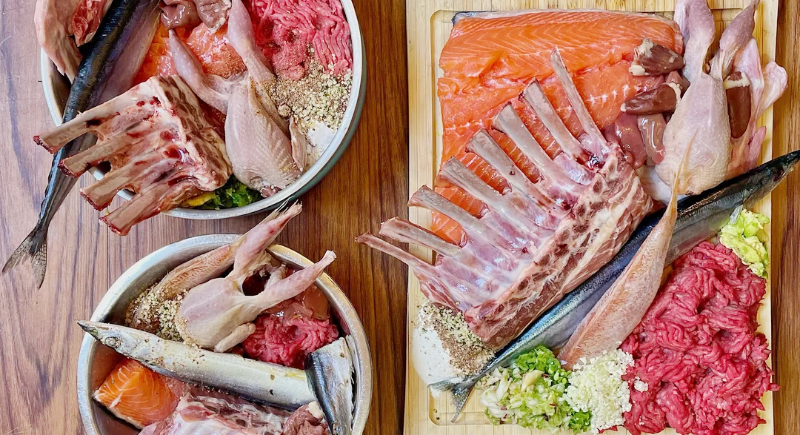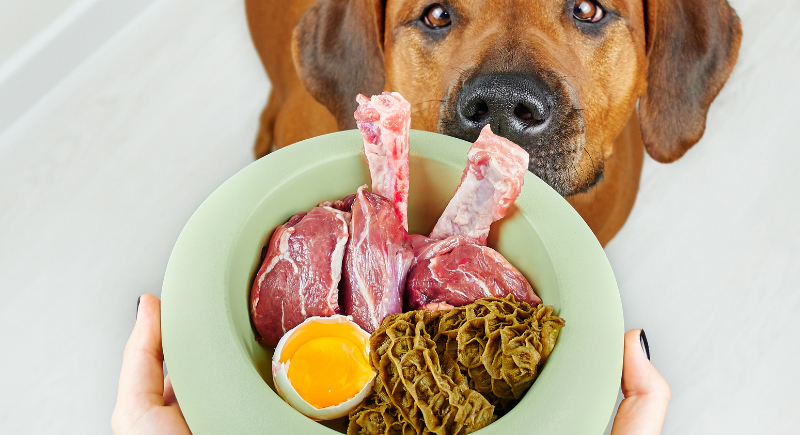These Elaborate Dog Bowls Are Inspiring Owners to Upgrade Their Pet’s Diet
There’s a small but growing corner of social media where dinner looks like it belongs in a fine-dining spread, except the plates are for dogs. Owners are posting photos of meals built from lamb racks, quail, salmon, mackerel, duck wings, turkey liver, and even a few slices of avocado. Each dish is neatly portioned, raw, and meant to mirror how dogs might eat in the wild. The focus isn’t decoration so much as care: fresh food, balanced portions, and a belief that pets deserve something better than kibble from a bag.
The idea is simple: feed dogs real, whole foods rather than dry kibble. Many pet parents report that this approach has led to shinier coats, cleaner teeth, and increased energy. However, others argue that it’s expensive and difficult to maintain, especially for large dogs or multi-dog households. Some Reddit users even joked that feeding five Alaskan malamutes a raw diet would cost more than rent, and they’re probably not wrong.
The Raw Food Debate

Image via Reddit/acocktailofmagnets
Raw feeding sounds great on paper. It’s designed to mimic what dogs’ wild ancestors would have eaten before commercial pet food became available. That usually means raw meat, organs, bones, and a mix of veggies or fruits. Supporters say it’s a natural, unprocessed way to nourish pets. Still, experts warn that it comes with risks. Studies have found bacteria like Salmonella and E. coli in some raw food products, which can cause illness in both dogs and humans.
Another big challenge is balance. Dogs require a balanced mix of nutrients, vitamins, and minerals, which can be challenging to achieve with homemade recipes. Some veterinarians recommend purchasing from certified raw food brands that test for safety and adhere to regulations. Others prefer owners stick with high-quality commercial food or add raw toppers instead of going fully raw. The truth is, the “right” diet depends on each dog’s needs, age, and health.
The Messy Side of Raw Feeding
Anyone who has tried raw feeding knows it can get messy quickly. That’s why surfaces matter almost as much as the food itself. Stainless steel bowls are a favorite because they’re durable and dishwasher-safe. Slow feeder bowls or KONG toys also work well by turning meals into a puzzle that keeps dogs entertained while minimizing splatter.
For dogs who like to drag their food around, old towels or silicone feeding mats are lifesavers. They catch drips and bones, which makes cleanup a lot easier. Some owners even feed their dogs outside on the grass, especially for big meals like whole prey rabbits or duck frames. Tile or laminate floors are another practical choice for indoor feeding since they wipe down easily. The trick is finding what works for your setup and your dog’s eating style.
More Than a Trend

Image via iStockphoto/Zontica
What drives this wave of homemade dog meals isn’t presentation. It’s care. Many owners say it feels good to feed their dogs real food with texture and flavor instead of something dry and uniform. The effort shows in how the dogs respond. They eat eagerly, tails going, bowls left spotless.
Raw feeding may not fit every budget or schedule, but it’s changing how people think about what dogs need. More owners are reading labels, comparing ingredients, and questioning what’s in the bag. It’s less about a trend and more about paying attention to what goes into the bowl and why it matters.